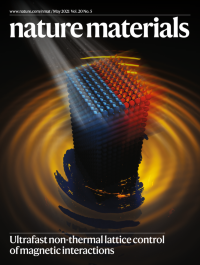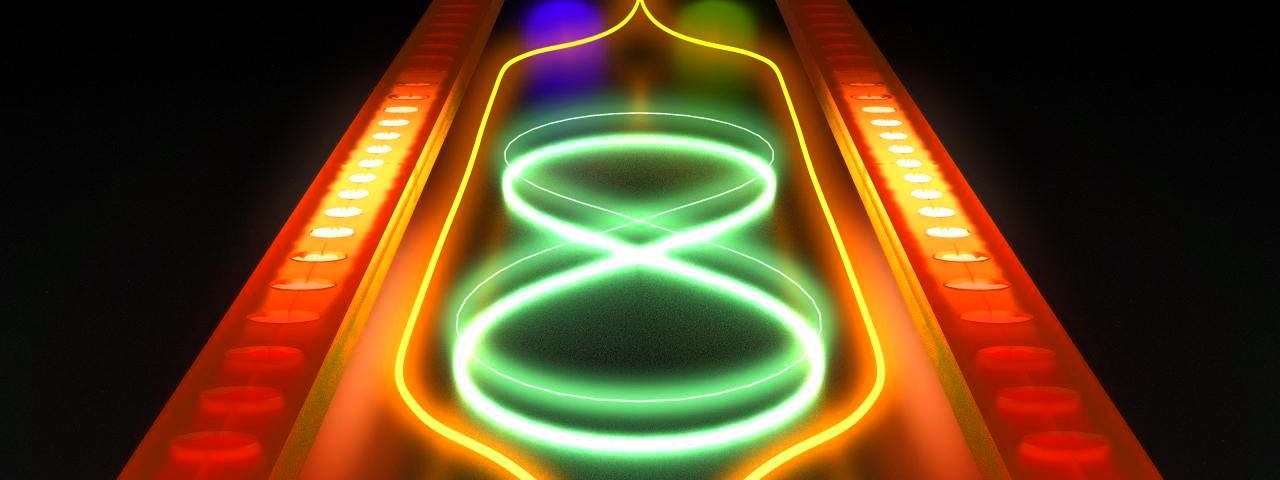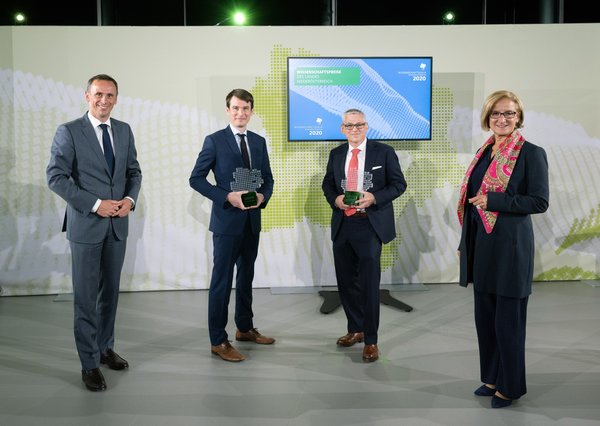News - Quantum Nanoscience
QN spin-off QphoX raises €8m to bring quantum modem technology to market, building towards the quantum internet
Dutch quantum computing company QphoX has raised an €8 million funding round, the largest investment in a quantum company in the Netherlands to date, in a significant development for the country’s fast-growing quantum industry.
The round was led by QDNL Participations. The EIC Fund, and existing investors Quantonation, Speedinvest, High-Tech Gründerfonds, and Delft Enterprises also participated. The significant investment from the EIC Fund follows the grant from the EIC Accelerator to drive the development of QphoX’s disruptive technology.
Read the full press release here
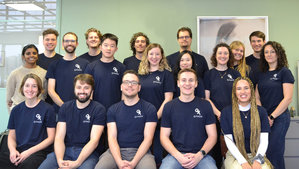
QphoX is a spin-off of the department of Quantum Nanoscience at the Faculty of Applied Sciences of Delft University of Technology. Co-founder Simon Gröblacher is a professor for quantum physics at the Quantum Nanoscience department, and co-founder Robert Stockill is an alumnus of the same department.
Non-classical mechanical states guided in a phononic waveguide
Groeblacher Lab, publication in Nature Physics, May 2022
Article A. Zivari, R. Stockill, N. Fiaschi, and S. Gröblacher, Non-classical mechanical states guided in a phononic waveguide, Nature Phys. (2022) https://doi.org/10.1038/s41567-022-01612-0
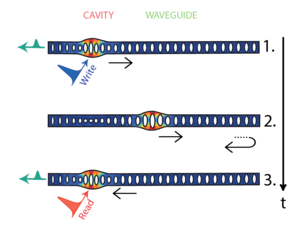
Optical fibers and waveguides allow the transmission of quantum information encoded in optical photons. They have become an indispensable technology not only of quantum optics experiments and applications, but also for modern classical communication. Realizing the equivalent components for mechanical excitations has a similar potential to revolutionize the nascent field of quantum acoustics and phononics. Such low-loss phononic waveguides will not only allow to guide and transmit (quantum) information encoded in phonons over tens of centimeters on a chip, but will form the basis for full coherent control over traveling mechanical excitations. Creating such a toolbox for quantum acoustics experiments will have a profound impact on quantum physics and allow for fundamentally new ways of interacting with quantum systems. Importantly, these acoustic waves are fundamentally different from the oscillation of single atoms or ions in traps, due to the associated large mass, their propagating character and the possibility to couple to a large variety of other quantum systems like quantum dots and superconducting qubits. Guiding single phonons is a crucial step towards realizing hybrid quantum devices and transfer quantum information over heterogeneous networks.
Zwaartekracht funding for quantum materials consortium
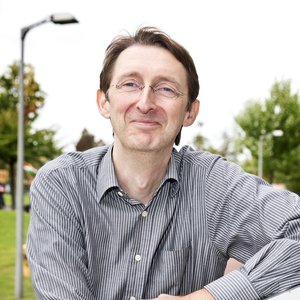
The ministry of Education, Culture and Science has awarded a Zwaartekracht funding of 21.5 million euro to the consortium QuMAT. TU Delft researcher Kobus Kuipers (Quantum Nanoscience) is one of the lead applicants of this Zwaartekracht consortium. The funding is intended for consortia of scientists that carry out innovative and influential research, with the aim to promote breakthroughs at an international level.
Discovery of the one-way superconductor, thought to be impossible

Associate Professor Mazhar Ali and his research group at TU Delft have discovered one-way superconductivity without magnetic fields, something that was thought to be impossible ever since its discovery in 1911 – up till now. The discovery, which was published in Nature yesterday, makes use of 2D quantum materials and paves the way towards superconducting computing. Superconductors can make electronics hundreds of times faster, all with zero energy loss. Ali: “If the 20th century was the century of semi-conductors, the 21st can become the century of the superconductor.”
Veni grant for Dr. Yaojia Wang
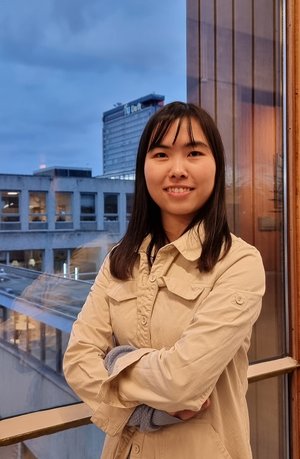
Dr. Yaojia Wang, postdoc in the Ali lab in the Department of Quantum Nanoscience in TNW, has been awarded the prestigious VENI grant from the NWO. This grant allows her to further develop her own research program with a funding of 280,000 Euros for a period of three years here at the TU. Her research will focus on investigating unconventional superconductivity (where electricity can flow without any resistance) in novel 2D quantum materials and devices for future applications in quantum technologies.
Dr. Wang, who did her PhD is Nanjing University before completing a PostDoc at the Max Planck Institute for Microstructure Physics, is an expert in discovering and understanding electronic properties of quantum materials. Some of her past work has been on superconductivity and spin transport in the famous topological semimetal, WTe2. More recently, she helped pioneer the field of Kagome metals through conducting the first studies revealing a novel anomalous Hall effect and unconventional superconductivity in devices of the semimetal KV3Sb5, which ignited one of the hottest topics in condensed matter physics today. Some examples of her work are:
1.) Wang, Y. et al, Topology and superconductivity on the edge. Nature Physics (2021). https://doi.org/10.1038/s41567-021-01190-7.
2.) Yang, S-Y†, Wang, Y.†, et al, Giant, unconventional anomalous Hall effect in the metallic frustrated magnet candidate, KV3Sb5. Sciences Advances 6, eabb6003 (2020).
3.) Wang, Y., et al, Gate-tunable negative longitudinal magnetoresistance in the predicted type-II Weyl semimetal WTe2. Nature. Communications 7,13142 (2016).
Press release TMD Nanopillars for non-linear optics
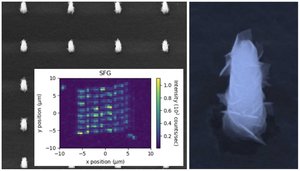
Nanoscale structures promise great advances for the technologies of future, but sometimes their fabrication becomes challenging. In a recent work published at Advanced Applied Materials, researchers from Conesa-Boj Lab, at the Quantum Nanoscience department of the TU Delft create nanopillars of Transition metal dichalcogenides (TMD) materials with amazing non-linear optical properties.
Press release Quantum mechanics and gravity dancing to the beat of drums
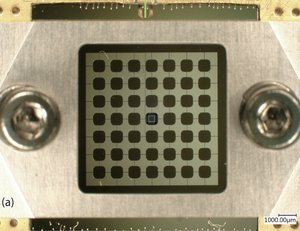
Gravity and quantum mechanics seem reluctant to get along, so what better way to break the ice than using drums? In their recent paper, researchers from the Steele Lab at the Quantum Nanoscience department of the TU Delft, and University of Oxford, propose a new way to explore the interaction between these two pillars of Physics using mechanical resonators.
Press release Level attraction and idler resonance in a strongly driven Josephson cavity
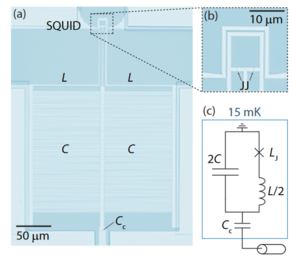
Quantum circuits offer a plethora of new phenomena, and their versatility could set the steppingstone for the technologies of the future. In a recent work published in Physical Review Research, researchers from the Steele Lab, at the Quantum Nanoscience department of the TU Delft, present their results on the study of Josephson cavities, showing new phenomena that has not been observed before.
Press release Imaging spin-wave damping using spins in diamond

Diamonds are one of the most valued gemstones in the world. Did you know that they can be used as ultrasensitive scanners? In this their recent work published in Advanced Quantum technologies, researchers from the van der Sar Lab, at the Quantum Nanoscience department of the TU Delft use diamonds to reveal magnetic waves that are hidden underneath wires on a chip.
Press release Directional control of spins to go more than Moore
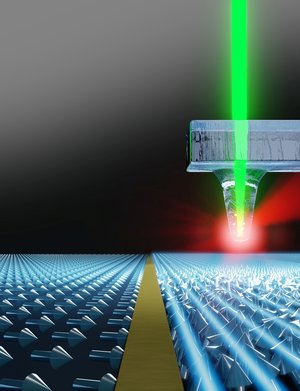
The more transistors a microchip has the more powerful it is, but increasing this number is becoming more and more difficult. For this reason, new alternatives are needed. In their recent work, researchers from the van der Sar Lab at the Quantum Nanoscience department of the TU Delft and collaborators from QuTech make use of electron spins to explore new solutions to this problem.
Press release Cooling down radio waves
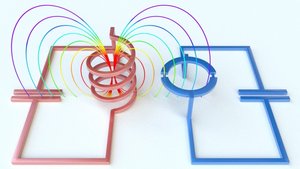
Monday morning. You get into your car and when you try to tune the radio, you only hear a buzzing sound. Where is this noise coming from? Can we cool it down? In a recent paper published in Science Advances, researchers from the Steele lab, at Quantum Nanoscience department of the TU Delft show how to reduce the noise to a quantum scale by cooling down radio waves.
Press Release Teleportation for the future of the Internet

Teleportation may sound as something belonging to the realm of Sci-Fi. What if we could make it real and use it? In a recent work published in Nature Photonics, researchers from Gröblacher Lab at the Quantum Nanoscience department of TU Delft and UNICAMP have controlled this effect to design repeaters for the future quantum internet.
TU Delft researchers realize quantum teleportation onto mechanical motion of silicon beams
Groeblacher Lab, publication in Nature Photonics, October 2021
N. Fiaschi, B. Hensen, A. Wallucks, R. Benevides, J. Li, T.P. M. Alegre, and S. Gröblacher, Optomechanical quantum teleportation, Nature Photon. (2021) https://www.nature.com/articles/s41566-021-00866-z
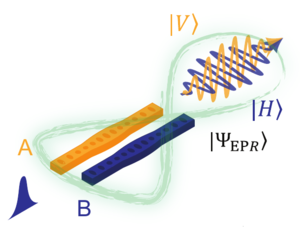
Quantumtechnologie is gebaseerd op qubits (quantum bits) die meestal bestaan uit afzonderlijke elektronen, fotonen of atomen. Een groep TU Delft onderzoekers is er nu in geslaagd om een quantumtoestand te teleporteren van een enkel foton naar een optomechanisch systeem, dat uit miljarden atomen bestaat. Hun baanbrekende onderzoek, in Nature Photonics gepubliceerd, maakt toepassingen mogelijk zoals repeater knooppunten voor het quantum internet. Daarnaast maakt het nieuwe manieren mogelijk om de fundamenten van de quantummechanica te onderzoeken.
Quantum-optomechanica
De quantum-optomechanica gebruikt optische middelen voor het manipuleren van mechanische beweging in het quantum regime. Tien jaar geleden zijn de eerste quantummechanische effecten in micro-mechanische systemen aangetoond. Gericht onderzoek heeft sindsdien geleid tot het aantonen van verstrengeling tussen dergelijke systemen en het gebruik ervan als een quantumgeheugen. En nu is de groep van Simon Gröblacher, van het Kavli Institute of Nanoscience en de afdeling Quantum Nanoscience van de TU Delft, in samenwerking met onderzoekers van de Staatsuniversiteit van Campinas in Brazilië, er voor het eerst in geslaagd om een willekeurige quantumtoestand van een optische qubit naar een micro-mechanisch quantumgeheugen te teleporteren.
Rubicon grant for former QN researcher
Mario Gely has been awarded a coveted Rubicon grant by NWO
The Rubicon grant enables young, promising researchers to do research at a top institution abroad. For many scientists, experience in a foreign country is an important step in their career.
Making quantum computers small again
Who? Mario Gely (Gary Steele group)
What? Quantum computers are growing ever larger, getting closer to fulfilling their potential, but if they already fill a whole room... they have to grow in a different way! This research aims to make a quantum computer fit on a chip.
Where? University of Oxford
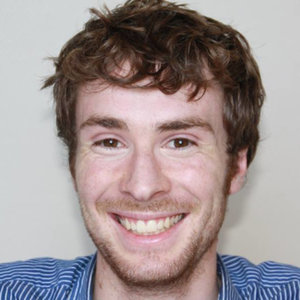
Scientists overhear two atoms chatting
Otte Lab, publication Science, 28 May 2021
How materials behave depends on the interactions between countless atoms. You could see this as a giant group chat in which atoms are continuously exchanging quantum information. Researchers from Delft University of Technology in collaboration with RWTH Aachen University and the Research Center Julich have now been able to intercept a chat between two atoms. They present their findings in Science on 28 May, "Free coherent evolution of a coupled atomic spin system initialzed by electron scattering", Lukas M. Veldman, Laetitia Farinacci, Rasa Rejali, Rik Broekhoven, Jeremie Gobeil, David Coffey, Markus Ternes, Alexander F. Otte, https://science.sciencemag.org/content/372/6545/964 .
Publication Caviglia Lab on cover Nature Materials, May 2021
Ultrafast control of magnetic interactions via light-driven phonons
D. Afanasiev, J.R. Hortensius, B.A. Ivanov, A. Sasani, E. Bousquet, Y.M. Blanter, R.V. Mikhaylovskiy, A.V. Kimel and A.D. Caviglia, Nature Materials 20, 607-611 (2021), https://nature.com/nmat/volumes/20/issues/5
An international team led by researchers of Delft University of Technology (TU Delft) has managed to manipulate the magnetic state of a magnetic material by optically shaking it. The whole process happens within an extremely short time frame of less than a few picoseconds. In times of stalling efficiency trends of current technology, such atomically-driven ultrafast control of magnetism opens broad new vistas for information technology. The results, which have been published in Nature Materials, could eventually lead to fast and energy-efficient data processing technologies, which are essential to keep up with our data hunger.
Read More
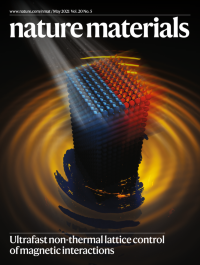
Scientific Appreciation Award of the State of Lower Austria
The state of Lower Austria has been awarding science prizes to outstanding researchers since 1964. The appreciation prizes, which serve to honor a complete scientific work of supraregional importance, are the highest honor awarded in the field of science in Lower Austria. This year's two prizes were presented yesterday by Governor Johanna Mikl-Leitner and were given to the physicist Simon Gröblacher and the MedRadOnc research group.
© NLK Pfeiffer
Publication in Communication Physics, Otte Lab
Remote detection and recording of atomic-scale spin dynamics
R.J.G.Elbertse, D. Coffey,J. Gobeil,A.F. Otte https://rdcu.be/b4oj0
Researchers at Delft University of Technology have developed a sensor that is only 11 atoms in size. The sensor is capable of capturing magnetic waves and consists of an antenna, a readout capability, a reset button and a memory unit. The researchers hope to use their atomic sensor to learn more about the behaviour of magnetic waves, so that hopefully such wavescan be used in green ICT applicationsone day.
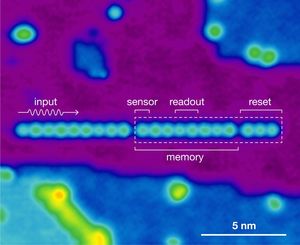
Publication Nature Physics - Groeblacher Group
A quantum memory at telecom wavelengths
A. Wallucks, I. Marinković, B. Hensen, R. Stockill, and S. Gröblacher
Nature Phys. https://www.nature.com/articles/s41567-020-0891-z (2020)
Building a large scale quantum network is one of the most exciting goals
of modern quantum physics. Such a network would allow to establish
absolutely secure communication, as well as connect future quantum
computing nodes over regional and global distances. While entanglement
distribution over relatively long distances has been possible for many
years, one of the other key components for such a network is still far
from a proven technology, namely a quantum memory. In our work we
demonstrate such a quantum memory, natively operating in the
telecommunication band. We realize our memory using a fully engineered
optomechanical system and demonstrate storage times of up to 2ms.
Andreas Wallucks selected as Schmidt Science Fellow
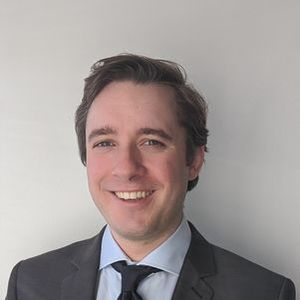
Schmidt Futures has selected Andreas Wallucks of the Simon Groeblacher Lab (Quantum Nanoscience) as one of their 22 early-career interdisciplinary Fellows. Wallucks will receive a a $100,000 stipend that allows him to change topics as a postdoc. He will join a community of fellows and will be paired with an internationally accomplished and experienced senior scientist as a mentor.
Andreas Wallucks spent his PhD working on new information storage techniques for quantum technology. He created a macroscopic entangled system using very delicate new micro-fabricated silicon devices which, when cooled to near absolute zero temperatures, stored information in the form of laser-pulse induced vibrations. As a Schmidt Science Fellow, Andreas is planning to pivot his research into optical sensors. He aims to develop optical detectors that can identify very low concentrations of biomolecules with potential applications for disease-detecting healthcare devices.
“I am super happy to be selected for the Schmidt fellowship”, Wallucks said. “It allows me to start looking for a research group where I can focus on a new topic: single molecule detection. I look forward to getting to know the community at the special events that the fellowship hosts throughout the year.”
About Schmidt Futures and the fellowship
Schmidt Futures is a philanthropic initiative founded by Eric and Wendy Schmidt that finds exceptional people and helps them do more for others together. The organization provides their Fellows with the skills and perspectives to harness and accelerate their exceptional scientific talents.
The Fellows are supported to pursue a postdoctoral research placement at a world-leading laboratory anywhere in the world. This placement must be in research at a significantly different discipline from the Fellow’s PhD, with the aim of exposing them to ideas and skills that will help them examine scientific problems and approaches from different perspectives and to accelerate discoveries.
